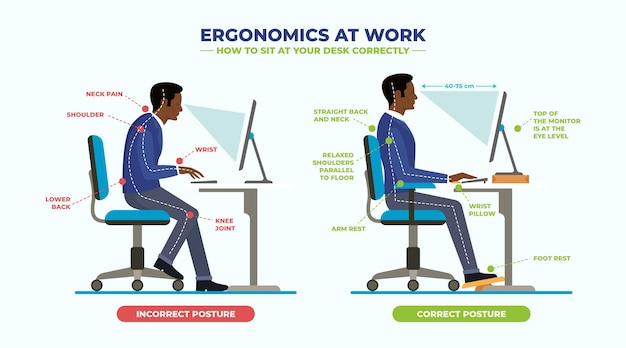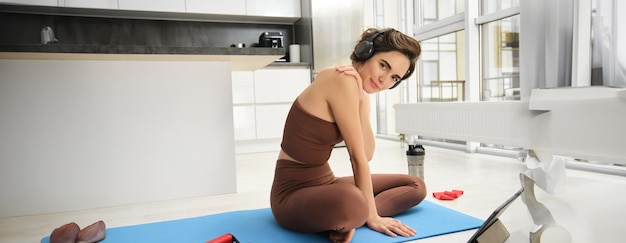15 Simple Posture & Ergonomics Hacks for Thyroid Health: Boost Energy and Alignment Without Equipment
Thyroid health impacts energy, metabolism, and overall well-being. But did you know that posture and ergonomics play a subtle yet significant role in supporting thyroid function? Poor posture—especially forward head position and slumped shoulders—can compress the neck and upper chest, potentially affecting blood flow and nerve signaling to the thyroid gland. While no direct cure exists through posture alone, optimizing alignment and reducing physical stress supports systemic balance, which benefits thyroid health.
The best part? You don’t need fancy gear. These 15 equipment-light tips are designed to improve posture, enhance ergonomics, and support thyroid wellness—anytime, anywhere.
Why Posture Matters for Thyroid Function
The thyroid gland sits at the base of the neck. Chronic forward head posture—common among desk workers—increases tension in the neck and shoulders, potentially disrupting local circulation and nerve activity. While research is ongoing, maintaining proper spinal alignment may help reduce strain and support optimal hormonal regulation.
Additionally, good posture promotes deeper breathing, better oxygenation, and reduced stress—all of which benefit endocrine health, including the thyroid.
15 Practical Tips for Posture, Ergonomics & Thyroid Support
["/stockimages/posture-overview.jpg", "/stockimages/ergonomic-workspace.jpg", "/stockimages/neck-stretch.jpg", "/stockimages/shoulder-rolls.jpg", "/stockimages/spinal-alignment.jpg", "/stockimages/breathing-exercise.jpg", "/stockimages/yoga-stretch.jpg"]

-
Adjust Your Screen Height: Position your monitor at eye level. Use books or a stand to elevate your laptop. This prevents forward head tilt and neck strain.
-
Sit on a Rolled Towel: Place a small rolled towel at the base of your spine. It supports the natural curve of your lower back and promotes pelvic alignment.
-
Practice Chin Tucks Daily: Gently pull your chin straight back, creating a "double chin." Hold for 5 seconds, repeat 10 times. This counters forward head posture.
-
Shoulder Blade Squeezes: Sit or stand tall, squeeze shoulder blades together for 5 seconds. Repeat 15 times. Improves upper back strength and posture.
-
Take Micro-Breaks Every 30 Minutes: Stand, stretch, or walk for 1–2 minutes. Reset your posture and boost circulation.
-
Use a Wall for Alignment Checks: Stand with heels, hips, shoulders, and head touching a wall. Practice this daily to retrain posture.
-
Try Wall Angels: Stand against a wall, arms in a goalpost position. Slowly slide arms up and down. Builds shoulder mobility and postural awareness.
-
Optimize Chair Depth: Sit so there’s a fist’s width between the back of your knees and the chair edge. Prevents leg strain and encourages upright sitting.
-
Practice Diaphragmatic Breathing: Breathe deeply into your belly for 5 minutes daily. Enhances oxygen flow and reduces stress hormones.
-
Stretch Your Chest Muscles: Stand in a doorway, place forearms on frame, and lean forward. Hold 30 seconds. Counters rounded shoulders.
-
Walk with Intention: Focus on standing tall, shoulders back, and engaging your core. Even short walks reinforce good posture.
-
Use a Lumbar Pillow (or Cushion): Support your lower back while sitting. Maintains spinal curves and reduces fatigue.
-
Do a Daily Neck Stretch: Tilt your head gently to each side, holding for 20 seconds. Relieves tension around the thyroid area.
-
Align Your Ears Over Shoulders: Use a mirror to check that your earlobes line up vertically with your shoulders. Correct misalignment throughout the day.
-
Practice a 5-Minute Evening Stretch Routine: Include neck rolls, shoulder shrugs, and gentle spinal twists. Promotes relaxation and recovery.
Track Your Progress: Simple Tools for Success
Consistency is key. Use these tracking ideas to stay on course:
- Habit Tracker App: Log daily posture checks or stretches using free apps like Habitica or Streaks.
- Posture Reminder Sticky Notes: Place them on your monitor: "Shoulders Back?" or "Breathe Deeply."
- Weekly Self-Check Photos: Take a side-profile photo weekly to monitor head and spine alignment.
- Journaling: Note energy levels and neck tension daily. Look for patterns linked to posture habits.
Stay Motivated: Cues That Work
Motivation fades—cues keep you going. Try these:
- Phone Alarms: Set chimes every hour: "Posture Check!"
- Anchor Habits: Pair chin tucks with brushing your teeth or waiting for coffee to brew.
- Visual Cues: Use a blue dot on your wrist or a specific ring as a reminder to sit tall.
- Reward Milestones: After 7 days of tracking, treat yourself to a relaxing Epsom salt bath.
Final Thoughts
Supporting your thyroid isn’t just about diet and medication. Small, consistent changes in posture and ergonomics can reduce physical stress, improve circulation, and enhance overall well-being. These 15 equipment-free tips are practical, science-informed, and easy to integrate into daily life. Start with one or two, track your progress, and build from there. Over time, better posture becomes second nature—and your thyroid may thank you.
















